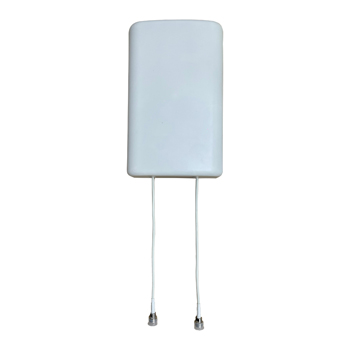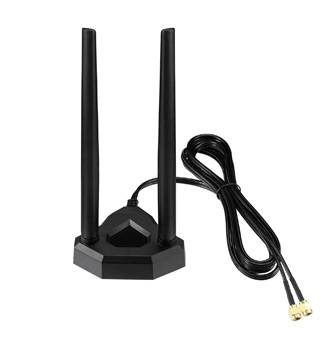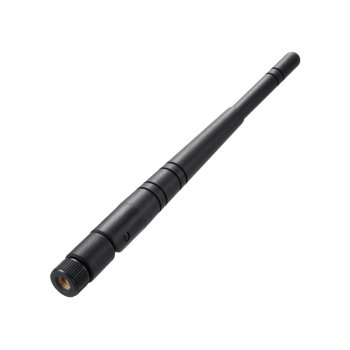
LoRa (Long Range) technology is a wireless modulation technique derived from CSS Chirp Spread Spectrum technology. Information that is communicated by the radio waves is encoded using Chirp pulses. In LoRa technology, the signal is spread over a wide frequency band providing a better coverage area and better tolerance to interferences. LoRa antennas are specifically designed to facilitate long-range and low-power communication and hence used in a wide range of applications like smart agriculture, smart cities, industrial automation, asset tracking, environmental monitoring, etc. Choosing the right type of LoRa antenna with the right specifications is crucial to enjoying reliable and efficient long-distance communication.
We have already discussed in depth what a LORA antenna is. This article provides a brief overview of LoRa technology and focuses on how to select a LoRa antenna for an application.
Table of Contents
ToggleUnderstanding LoRa Frequency Bands
LoRa technology uses different frequency bands in different regions of the world. In Europe, the LoRa frequency band is generally 863 to 870 MHz, in the US it is generally 902 to 928 MHz and in China, it is 433 MHz. In these frequency bands, there are multiple LoRa channel frequencies available. The specifications for LoRa change from region to region due to the different regulatory requirements in each region. Certain countries even require the gateway to be licensed or registered and some countries require them to be certified to allow other users to communicate using those channels. It is important to adhere to the regulatory standards and certifications of the region for the legal operation of a LoRa communication system and to avoid any interference.
Key Factors to Consider When Selecting a LoRa Antenna
The performance of the LoRawan antenna is a critical part of any LoRa project or practical application. Hence choosing a LoRa antenna with the correct specifications such as the frequency range, gain, return loss, and bandwidth is essential for optimum performance. Factors like indoor or outdoor use, mounting requirements, and environmental conditions also should be considered when selecting a LoRa antenna.
Frequency compatibility:
LoRa technology operates in specific frequency bands based on the regions mentioned above. Hence it is important to select LoRa antennas that support these frequency bands to get the optimum transmission and to ensure compatibility with the communication needs of the LoRa module. If a LoRa antenna is used outside its frequency range, the performance will be degraded.
Antenna gain:
This parameter determines the ability of an antenna to send and receive signals in a particular direction. By choosing a higher gain, signals can be transmitted to a longer distance, but the radiation pattern will be narrower. LoRa antennas with lower gains will transmit to a shorter distance but will have a much wider radiation pattern. Hence, an appropriate gain should be chosen based on the application to enhance the communication range and tolerance for interferences.
Antenna type:
LoRa antennas are available in different types such as dipole antennas, monopole antennas, patch antennas, yagi antenna and omni fiberglass LoRa antennas. They can be mainly categorized as omnidirectional or directional antennas. Omnidirectional LoRa antennas are suitable for applications requiring 360 degrees coverage for the signal but for a shorter distance. Directional LoRa antennas are ideal for applications requiring signal transmission in a particular direction for a longer distance due to their focused and narrow radiation pattern.
Physical size and form factor:
The size and shape of the LoRa antenna should be selected based on the environmental conditions and space constraints of the application. Indoor LoRa antennas typically have a small form factor compared to outdoor antennas.
Installation environment:
Environmental factors such as weather, temperature, exposure to water and corrosion, etc. should be considered when selecting a LoRa antenna. When choosing LoRa antennas for outdoor applications, they typically need to have appropriate weatherproofing and the ability to withstand outdoor weather conditions. Indoor LoRa antennas typically do not require any specific installation hardware and are suitable for enclosed spaces and inside buildings.
Polarization:
The polarization of the LoRa antennas should be matched with the polarization of the LoRa module for enhanced signal transmission performance. The polarization can be either linear, vertical, or circular. For most applications, LoRa antennas with linear or vertical polarization are better suited. Circular polarized LoRa antennas are better for applications where the orientation of the antenna varies.
Practical tips for antenna selection
Besides the critical parameters that are mentioned above, when practically implementing a LoRa communication setup, the following factors also need to be considered when selecting a LoRa antenna to get optimum performance of the application.
Impedance matching:
The ratio of the input voltage to the input current at the feeder end is known as the input impedance of the antenna. LoRa modules used in most applications have an impedance of 50 ohms typically. To guarantee efficient signal transmission, the impedance of the LoRa antenna should be matched with that of the LoRa module.
Cable length and connectors:
The connector types most used in LoRa communication applications are the SMA and N-type connectors. Coaxial cables are the most used cable type for LoRa applications. RG58 and RG174 cables are generally used for shorter-distance cable requirements and LMR series cables for longer distances. Cables and connectors should be chosen to minimize the signal attenuation and interference over the cable length.
Testing and tuning:
After a practical implementation of a LoRa antenna, its performance should be regularly tested. LoRa antennas should be mounted as far off from the ground as possible and away from large metal objects. By modifying the orientation and placement of the LoRa antenna, the performance of the antenna can be improved.
Recommended Antennas for LoRa Applications
LoRa antennas are versatile and therefore they are used in a wide range of applications. They are available in different forms such as chip antennas, dipole antennas, monopole antennas, patch lora antennas, helical antennas, Yagi lora antennas, and external omnidirectional antennas.
The type and specifications of the antenna must be carefully chosen based on the application, environmental conditions, and the specific LoRa communication module being used. Patch antennas are generally small and lightweight. They are typically used in applications that have the LoRa antenna built into circuit boards. Similarly, PCB LoRa antennas are integrated into the circuit itself. These types of LoRa antennas are used in small enclosure applications like modems or routers. External omnidirectional LoRa antennas are used in applications that require a long-range coverage area. They are typically mounted on top of buildings or towers and are built to withstand harsh weather conditions.
These types of LoRa antennas are used in practical applications like environmental monitoring systems, asset tracking systems, smart agriculture systems, emergency response systems, etc. Helical LoRa antennas are used in applications where polarization diversity or compact size is required such as handheld devices or embedded systems.
Conclusion
LoRa antenna is a critical component in any LoRa communication system, and the performance of the antenna will directly impact the metrics of the communication system itself. Hence, it is essential to consider the specifications such as frequency, gain, bandwidth, and range as well as the indoor or outdoor use, mounting options, and environmental conditions before selecting a LoRa antenna. It is also important to verify that the chosen antenna complies with the regulatory standards of the operating region. Proper consultation and testing will ensure that the Lora antenna and the communication system will perform at the expected efficiency and reliability of the application in its real operating environment.








